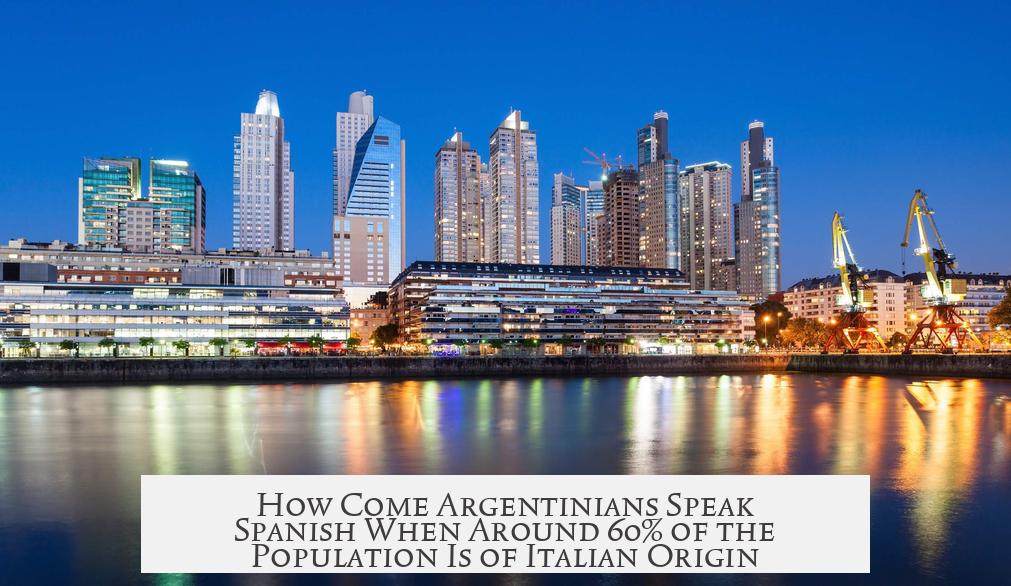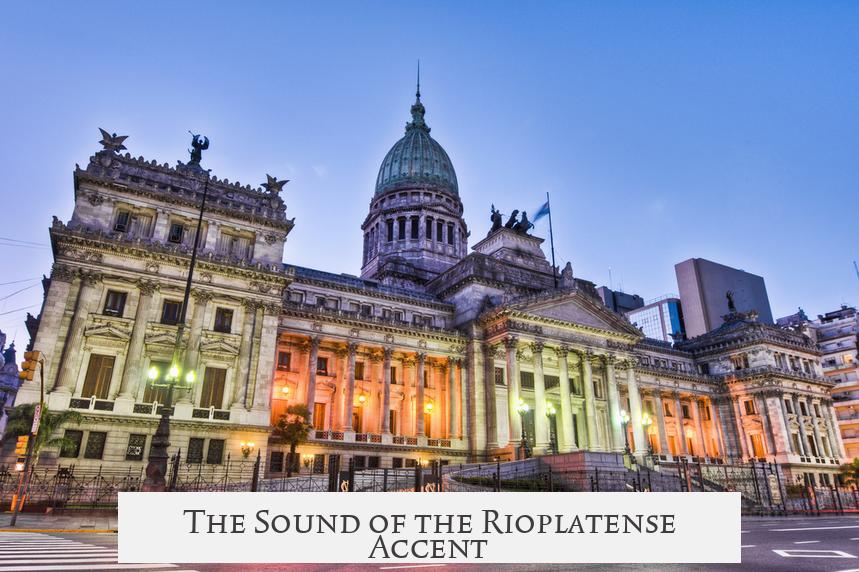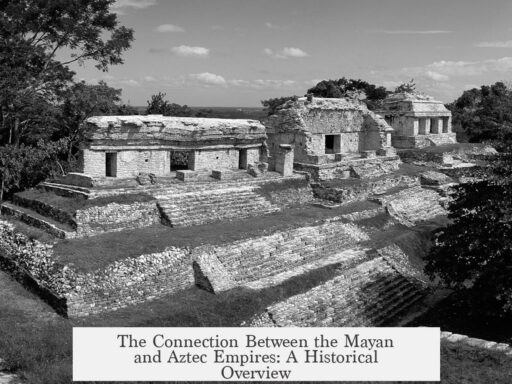Argentinians speak Spanish despite around 60% of the population having Italian origins because Spanish was firmly established as the official and dominant language long before and throughout massive Italian migration. Italian immigration occurred gradually over a century, from the mid-19th century to the 1950s, allowing Spanish to remain the lingua franca and official language of government and education.
The Italian migrants to Argentina did not arrive as speakers of a single unified Italian language. Most spoke diverse regional dialects such as Piedmontese, Venetian, Genoese, or Neapolitan. These dialects were often mutually unintelligible. This linguistic diversity made it difficult for a unified Italian language to develop or compete with Spanish in public life.
The Argentine government actively promoted Spanish through mass public schooling and compulsory military service, which served as tools for integrating the diverse immigrant population into a cohesive national identity. Spanish was reinforced as the language of administration, media, and education. Immigrants, including Italians, adapted by adopting Spanish for daily interaction and official matters.
Still, Italian influence remains strong in the local variant of Spanish, known as Rioplatense Spanish, especially in the Buenos Aires region. Italian immigrants contributed many words to the local slang called lunfardo. Common loanwords include:
- laburo, laburar (work), from lavoro, lavorare
- pibe (boy), from pivello
- mina (girl), from femmina
- fiaca (laziness), from fiacca
- birra (beer)
Research highlights that the intonation of Rioplatense Spanish closely resembles Southern Italian dialects, mainly Neapolitan, rather than other Spanish dialects. Native Spanish speakers from other regions often note that Rioplatense Spanish sounds like Italians speaking Spanish.
In short, the dominance of Spanish in Argentina results from historical timing, government policies, and the linguistic diversity of Italian migrants, which prevented Italian from rising as a competing language. However, Italian culture and language deeply shaped Argentine Spanish.
- Italian immigration to Argentina was gradual over 100 years.
- Italian migrants spoke numerous regional dialects, not standardized Italian.
- Government policies promoted Spanish to unify diverse populations.
- Italian influenced Rioplatense Spanish vocabulary and intonation.
- Rioplatense Spanish retains distinct Italian phonetic traits.
How Come Argentinians Speak Spanish When Around 60% of the Population Is of Italian Origin?

Argentinians speak Spanish because it remained the official language shaped by historical migration patterns, government policies, and social integration—despite the fact that a large portion of the population is of Italian descent. Sounds paradoxical, right? Let’s unravel this linguistic mystery step by step.
Picture this: Italy didn’t exactly flood Argentina overnight. Italian migration was a slow, steady tide over about a century—from the mid-1800s up until the 1950s. It wasn’t a loud tsunami; it was more like gentle waves. This meant Italian immigrants arrived gradually, mingling with locals, authorities, and other immigrant groups, all mostly Spanish-speaking.
Here’s a kicker—when Italians left for Argentina, many didn’t speak a unified “Italian” language as we know it. Instead, they spoke a kaleidoscope of regional dialects—Piedmontese, Venetian, Genoese, Neapolitan, just to name a few. These dialects weren’t mutually intelligible in many cases, so the “Italian” introduced was fragmented and varied.
How does that play into the language they adopted? Well, it’s a bit like arriving in a new country where everyone speaks English, but you and your friends only understand different regional dialects of English. Soon, you get used to the common tongue to get things done—especially when dealing with government paperwork or buying a cup of coffee.
Government Integration: The Spanish Glue
Now, the Argentine government didn’t just sit back and watch languages battle it out. It actively promoted Spanish as the national language through mass public schooling and conscription. These were not just education and military exercises; they were deliberate tools to forge a national identity from a quilt of immigrant fabrics.
Public schools in Argentina taught Spanish to immigrant children, ensuring that the next generation spoke Spanish fluently. Conscriptions—a fancy word for mandatory military service—also mixed diverse populations, reinforcing Spanish as the language for all. In such environments, Spanish naturally dominated.
Adding to this, immigration wasn’t only Italians. Argentina also welcomed Spaniards (who already spoke Spanish), Germans, Syrians, Lebanese, and Poles. With such a diverse crowd speaking so many languages, Spanish acted as the lingua franca—the common tongue that united them all.
Italian’s Lingering Mark on Rioplatense Spanish
Just because Italians didn’t take over the language doesn’t mean they left no footprint. Far from it. The Italian heritage in Argentina deeply influenced the local form of Spanish—known as Rioplatense Spanish—especially in Buenos Aires and the Pampas region.
One way the Italian influence sneaks in is through lunfardo, the street slang that blossomed in the neighborhoods where many immigrants settled. Lunfardo incorporated countless Italian words, which filtered into everyday speech right down to the lower classes. Some Italian words became so commonplace that Argentinians might not even realize their origins.
Italian Words You Probably Know in Argentina
- Laburo (work) from Italian lavoro>
- Laburar (to work) from lavorare
- Pibe (boy or young man) from pivello
- Mina (girl or broad) from femmina
- Fiaca (laziness) from fiacca
- Birra (beer)—yes, some words just travel straight over with no fuss
These words seamlessly combine into sentences, coloring everyday conversations with a dash of Italian zest.
The Sound of the Rioplatense Accent

Beyond vocabulary, listen closely to the way Argentinians speak Spanish—it often sounds more like an Italian accent than a Spanish one. Linguistic researchers found that Rioplatense Spanish intonation resembles some southern Italian dialects, especially Neapolitan.
Ask Spanish speakers from Spain or Mexico about the Argentine accent and you’ll often hear, “sounds like an Italian speaking Spanish!” This intonation owes its uniqueness to Italian immigrants’ speech patterns blending with local Spanish over generations.
So Why Didn’t Italian Ever Become Argentina’s Second Language?
It boils down to a few crucial reasons:
- Italy’s own fragmented language situation: Immigrants didn’t bring one unified Italian language but a mix of dialects, making it tough to form a collective Italian-speaking community.
- Strong state policies: Education, military service, and official use ensured Spanish remained the official and dominant language.
- Immigrants’ assimilation: Italians adapted to local practices quickly, using Spanish to communicate across groups.
- Spanish as lingua franca: The diversity of immigrants made a common language necessary—Spanish filled that role perfectly.
In essence, Argentina is a linguistic melting pot where Spanish ruled the roost, but Italian flavors persist prominently in local speech.
Practical Takeaway: What Can We Learn?
Imagine moving to a new country where a different language dominates. What happens next? You learn the language if you want to thrive. This is a lesson in adaptability and cultural fusion. Languages evolve and borrow from one another—sometimes subtly, sometimes overtly.
For travelers and language lovers, hearing Rioplatense Spanish is like catching a cultural wink from the past. Every pibe and laburo tells a story of migration, adaptation, and identity shaping.
So, the next time you hear an Argentine speak Spanish with a unique flair and sprinkle of Italian words, you’re hearing history in motion—a reminder that language and culture grow together in surprising ways.




